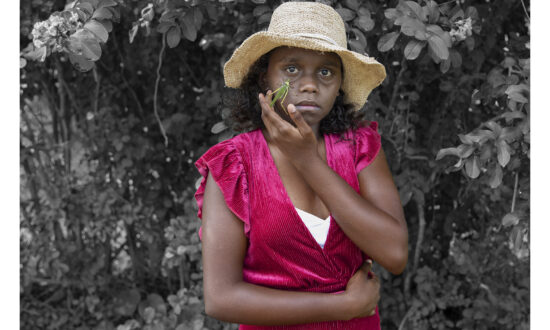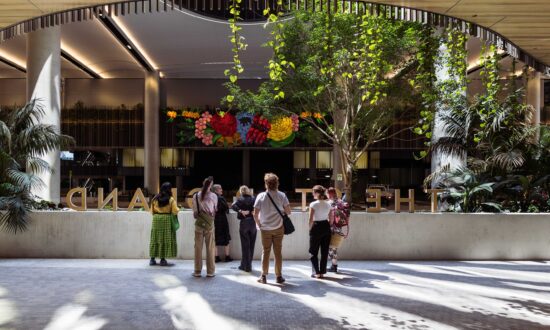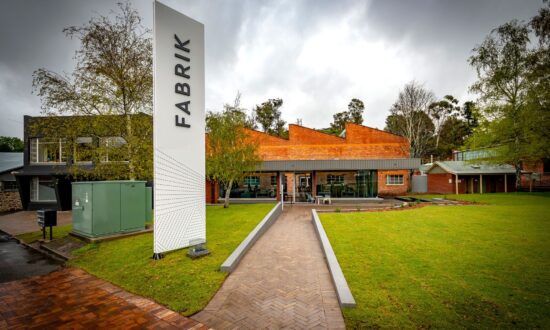Like the proverbial scarecrow, Julia Robinson is outstanding in her field.
This year, the Adelaide-based artist is being recognised as the focal point of the 2024 South Australian Living Artists Festival – the culmination of two decades of practice and evolution. But, for her upcoming SALA exhibition Split by the Spade, Robinson will also turn the Adelaide Central Gallery into a bleak pastoral landscape.
“The way I’ve treated the space is to think about it like a kind of a field landscape, and to position the viewer, when they walk in, like they’re in this loose landscape with a ghostly presence. In the middle of the space there’s going to be this free-hanging, curtain-like installation, which is kind of a ghostly fabric tree.”
Robinson’s work has often been rich with literary allusions, from maypole-and-mayhem horror films like The Wicker Man and Midsommar, to the mythical stories of Circe and Scylla from Homer’s The Odyssey, which informed her major 2020 work Beatrice – a writhing purple and orange mass of silky, studded tentacles exhibited in the Museum of Economic Botany as part of the 2020 Adelaide Biennial of Australian Art: Monster Theatres.
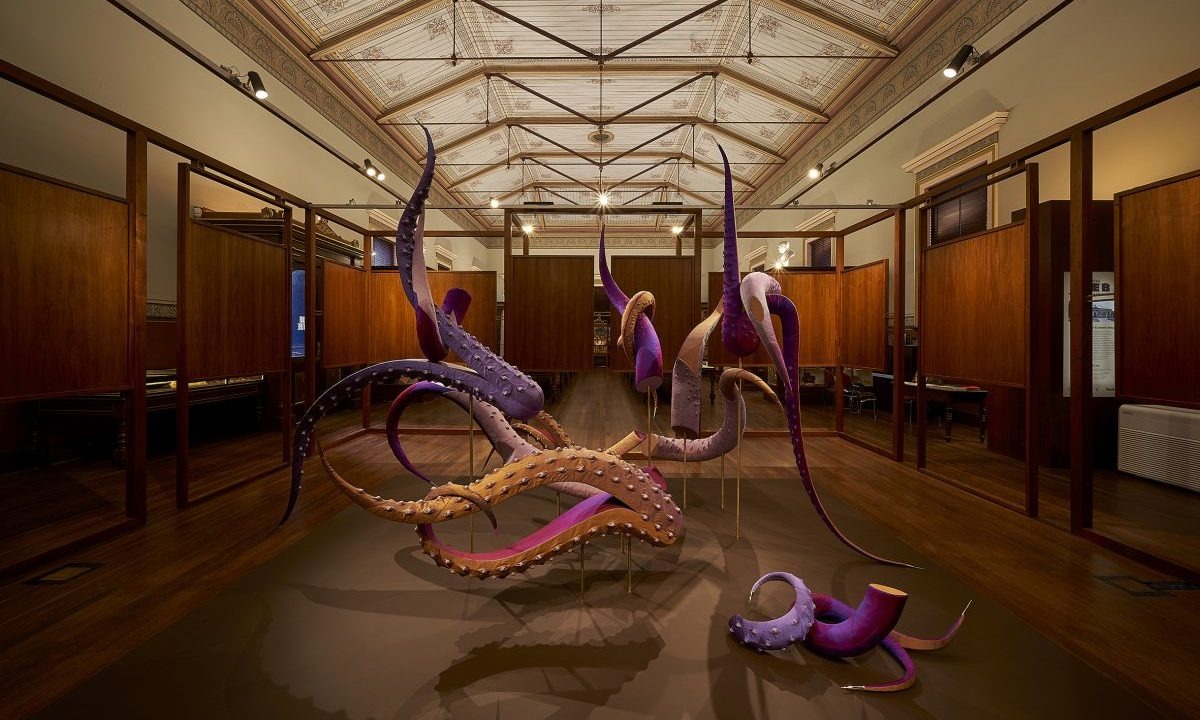
An installation view of Julia Robinson’s Beatrice at the Museum of Economic Botany during the 2020 Adelaide Biennial. Photo: Sam Roberts, courtesy the artist and Hugo Michell Gallery
For Split by the Spade, Robinson has drawn inspiration from Starve Acre, a 2019 folk horror novel by Lancashire author Andrew Michael Hurley. Recently adapted for film, the book hinges on a Yorkshire family haunted by the recent death of their young son, while struggling to eke a living from the barren family plot. Knotted ominously through the soil are the roots of an old hanging tree, a motif that Robinson plans to evoke through the textile-based installation of her little indoor field.
“Basically, I’ve had all my scythes and my pitchforks printed onto white sheer fabric, and they’re going to be arranged in the manner of this tree made out of pitchforks and scythes. It’s a sort of a symbolic sort of tree, [that] kind of alludes to the form of a tree, but hangs ghostly in the space.”

Julia Robinson, Turning over weeds and worms, linen, thread, bleach, wheel, steel, fixings, approx 130 x 55 x 20cm. Photo: Sam Roberts, courtesy the artist and Hugo Michell
“Sounds spooky,” I suggest.
“Hopefully!”
Along with Split by the Spade, a retrospective book released to coincide with Robinson’s SALA milestone will include writing from Leigh Robb, who made Beatrice one of the centrepieces of her 2020 Adelaide Biennial program, and Hannah Kent, author of the best-selling Burial Rites and the folkloric Good People.
“Before I even met Hannah Kent, her two first novels were significant influences on my practice and on my thinking,” Robinson says. “We’re thinking about the same things, we’re just manifesting it in different ways.”
Robinson’s decades of “sculptural storytelling” will also be showcased in a collection of work curated by Robb and planted throughout the Art Gallery of South Australia’s Melrose wing.
Like the book, these works will allow the viewer to “journey” through the artist’s years of exploring and subverting macabre fairytales, witchy imagery, and the barely-buried darkness of the English countryside. For Robinson, these long-held interests stem from a childhood split, not by gardening implements, but geography.
“My parents emigrated from England, and so my brother and I were born here, but we were really lucky, because they kept us in contact with our British family. So we had a lot of opportunities to travel back to England and spend a lot of time with grandparents and uncles and aunties.
“I had this sort of split childhood where I grew up in Australia, obviously, but I’m so culturally steeped in British stuff, like cathedrals, churches, graveyards, museums, and, you know, growing up reading fairytales and folklore. I think that a lot of the stories I was always drawn to as a kid were the ones that were slightly scary, that lean towards that dark narrative.”
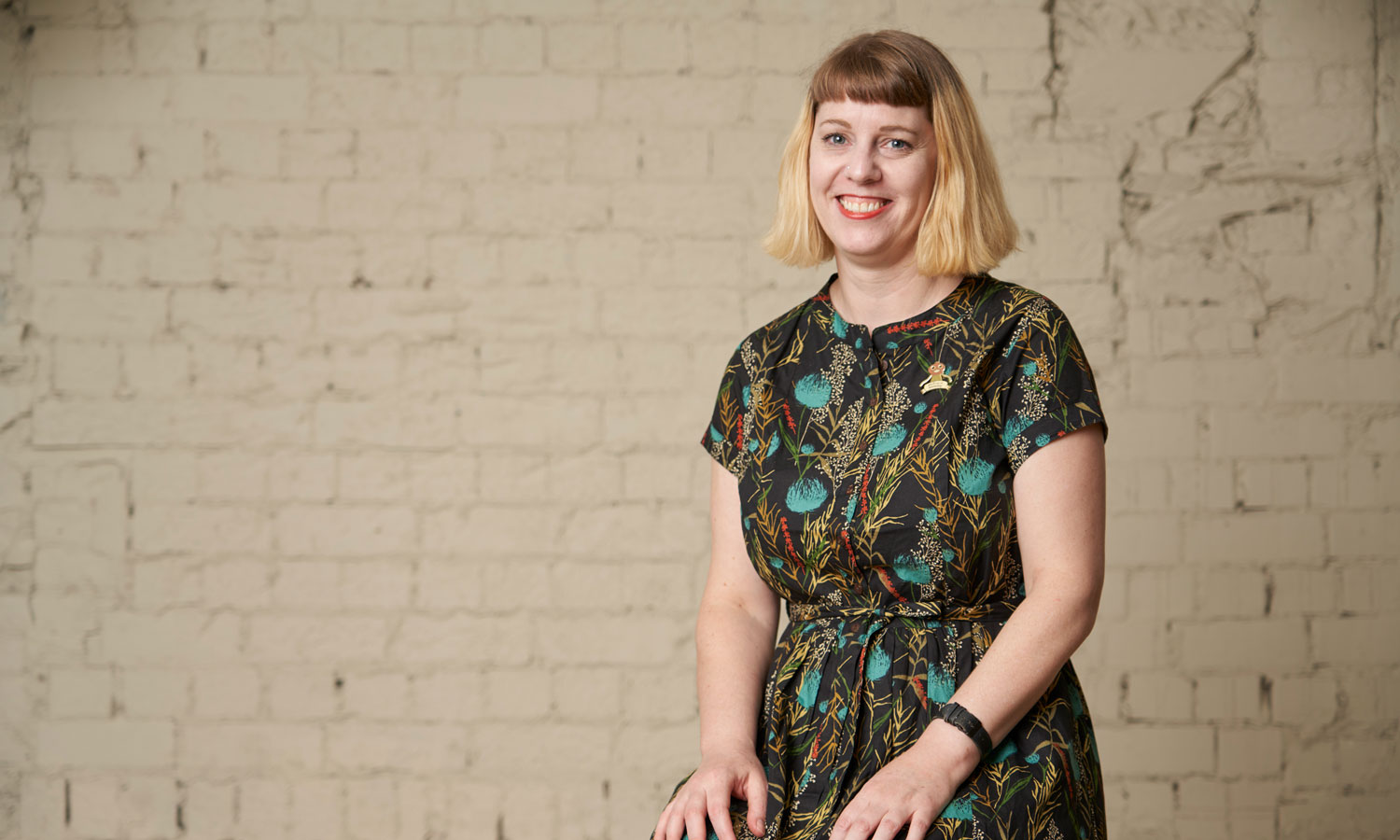
Julia Robinson has always been drawn to stories with a dark narrative. Photo: Sam Roberts
When the grown-up Robinson began her art practice, it wasn’t long before she started tapping that childhood well – along with some other skills picked up along the way.
“I learned to sew when I was about five – my mum taught me basic stitching, and I was just always sewing as a kid and always making things. And then I went to art school, and I think I had a concept in my head of, ‘Well, I’m probably going to be a painter if I’m going to be an artist’.”

Get InReview in your inbox – free each Saturday. Local arts and culture – covered.
Thanks for signing up to the InReview newsletter.
By her honours year at Adelaide Central School of Art, where she now works a lecturer, Robinson had set aside those preconceptions and picked up the needle.
“Sewing was just a language I was very comfortable with, and I just sort of flipped it into my art practice. It started out as just a kind of necessity. That’s how I had to make work, that’s the way my brain worked and my fingers wanted to play with fabric, and so I did.”
Fittingly, the haunted field of Split by the Spade will draw heavily on her roots – right down to the venue.
“Being asked to show at the Adelaide Central Gallery – which is kind of my home turf because I teach there – is really, really exciting,” she says.
Fortunately for Robinson, and the viewer, it’s proved far more fertile ground than a spooky English paddock.
Julia Robinson’s Split by the Spade exhibition will be at Adelaide Central Gallery from July 30 until September 6, while Sculptural Storytelling will show at the Art Gallery of SA from August 1-31. SALA runs throughout the month of August.
Support local arts journalism
Your support will help us continue the important work of InReview in publishing free professional journalism that celebrates, interrogates and amplifies arts and culture in South Australia.
Donate Here

